With experience, expertise and investments, the vine growers in central Italy improve the quality of their products. You are building new cellars and relying on marketing.
In Montefalco, the nearest wine bar is never very far.
“This wine strives to be vertical.” With both arms, the black-apron sommelier demonstrates the floating of the spirit in light spheres, tense up to the tips of his toes, which almost lose contact with the stage. From chemistry to alchemy he strives, mixing oenological science and gastronomic magic, he boasts of authoritative expertise, he shines with adjective eloquence. It’s sommelier competition in Montefalco, a postcard city in the middle of Italy. On the stage of the City theater Sagrantino wine is celebrated with a puckered nose and decanted vocabulary. It all depends on the appearance.
The Sagrantino has had an amazing career. The grape variety is old, but in the past it was only used to make sweet wine (passito). The cellar master only began forty years ago Ludovico Mattoni, to process these grapes into table wine. That was a breakthrough. The winemakers of the Montefalco region opened up a niche in the world market in the field of heavy, bitter, full red wines within a short period of time. Over the past twenty years they have doubled Sagrantino production, from 0.7 to 1.5 million bottles a year.
When the winemaker Giampaolo Tabarrini explains how the wine ferments in its barrels, it dances as if it was fermenting itself. «Our secret is: do nothing. We leave the wine, then we press and close the barrel. ” His son Alessandro, an oenologist with a university degree, doesn’t take it that easy. He checks and measures every day, he wants to know exactly what is happening in the large steel barrels in the newly built cellar. After four years, the two of them can try the wine and consider whether and how they want to mix their different varieties – that is not a scientific, but a creative process.
Giusy Moretti introduces himself as a «Marketing Manager». The businesswoman used to work as an artist in New York and as an architect in Milan, then she returned to the country, to her parents and to wine. She brought about that the specialist publication “Decanter” last year the Sagrantino 2016 of Moretti Omero was included in the list of the 50 best wines in the world. Since then there has been no shortage of demand from America, Asia and Russia.

Giusy Moretti has achieved a marketing feat.
«It depends on the marketing. We ourselves already know that we make good wine. But the potential customers have to know that we are here. ” For example, a sommelier in New York has to visit the restaurants and demonstrate and explain the wine. Thirty years ago, her father had to explain at trade fairs that his organic wine, which was still completely unusual at the time, was not rejected, but rather particularly good.
Organic does too Paolo Bea. He first leaves his grapes on the mash for weeks, including the stems, only then does he press. “It’s crazy to press right after reading. You only have sugar water, ”he says. The wine draws its own tannin from the stems, it does not need the foreign tannin from the wooden barrel. Bea invented the “transparent wine label”, she documents the entire processing in handwriting. He switched from architecture to viticulture and, first of all, built a new cellar according to his own plans. There is passive ventilation, cool air flows into the building through large pipes below, then rises from floor to floor as it heats up and escapes through the roof. Several wine growers in the area have invested a lot of money in expanding their cellars. In this way you can store and care for the wine longer and ultimately sell it at a higher price.

Liù Pambuffetti belongs to the fourth generation in the family business.
Liù Pambuffetti and the chef Giulio Gigli invite you to a culinary tour of the world with Montefalco wines. They effectively demonstrate that the right Sagrantino goes well with curry vegetables, for example. In the cellar Scacciadiavoli the industrialization of the Umbrian wine culture began over a hundred years ago. Built in 1884 Ugo Boncompagni Ludovisi, Large landowner and Prince of the Holy Roman Empire, a multi-aisled wine cathedral with columns made of cast steel, designed for one million liters of wine.
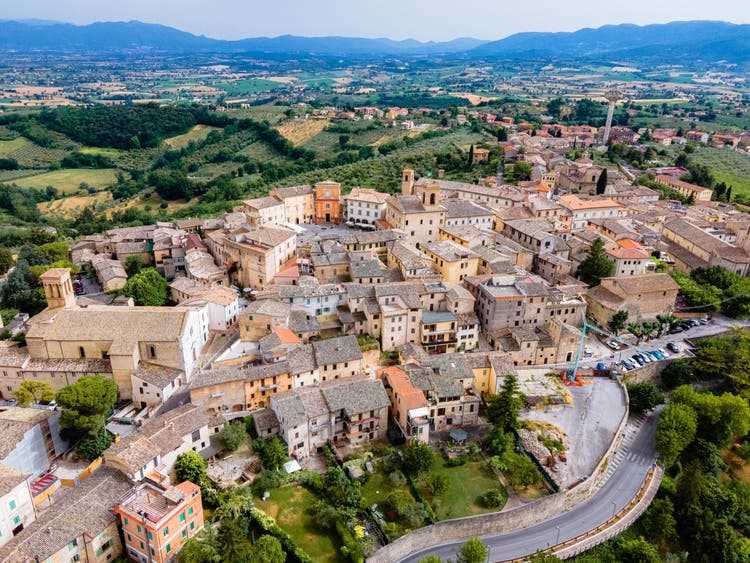
Montefalco is also known as the Umbrian Terrace.
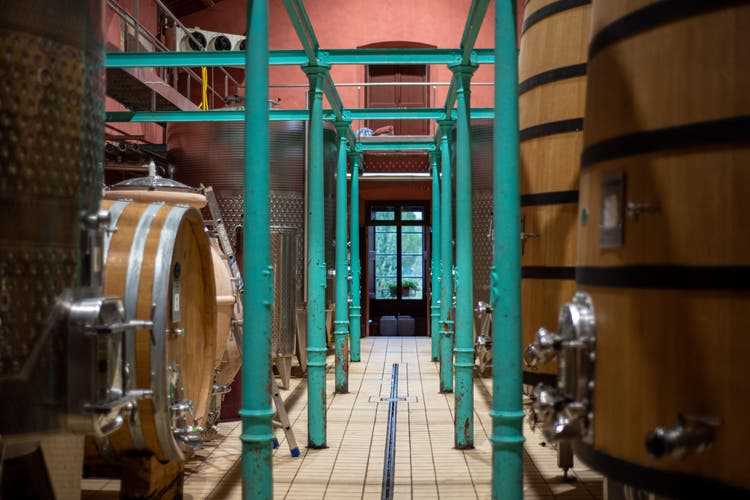
Steel tanks and wooden barrels for fermentation in the Scacciadiavoli wine cellar.
A former farmhand took over the business in 1954, a family business was established, and today the fourth generation is at work. The building has survived several earthquakes and is still doing its job. It is pressed, mixed and stored on four levels, from top to bottom. A water cistern at the bottom ensures temperature equalization. There was a lot of heat in Umbria before, but recently the temperature has risen to 45 degrees. This becomes a problem for certain grape varieties.
Catia Guidobaldi and Roberto Almadori live somewhere in the hills between olives, vines and forests. They invite you to taste them in the cozy kitchen with old furniture and a flashing high-tech stove. They only have a good three hectares of grapes. your Cantina Terre di San Felice produces around 12,000 bottles per year. They are making their first attempts with the amphora, and a number of winegrowers are currently rediscovering the classic storage vessel used by the ancient Greeks and Romans. It costs twice as much as a wooden barrel, but it lasts almost forever. And above all: “The wine is not adulterated by the wood, it finds its own character.” Among other things, Sagrantino sweet wine is served here in the old style. It goes well with aged cheese or with Ciambelline, homemade pastry rings made from wine dough.
The sommelier competition in Montefalco is part of an advertising campaign for Umbrian wines, as is a wine seminar for journalists and influencers, which includes the Consorzio Tutela Vini Montefalco invited. The Italian government is currently subsidizing marketing outside the European Union. Switzerland and the USA are targeted. One looks for markets in moderate or cool climates, in hot countries heavier red wine is less in demand.
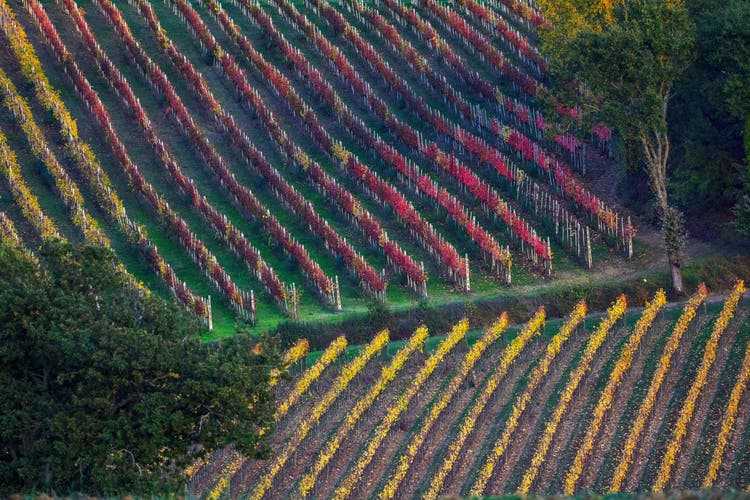
In keeping with the season, the leaves of the vines are colored in autumnal yellows and reds. Taken in Montefalco, Umbria.
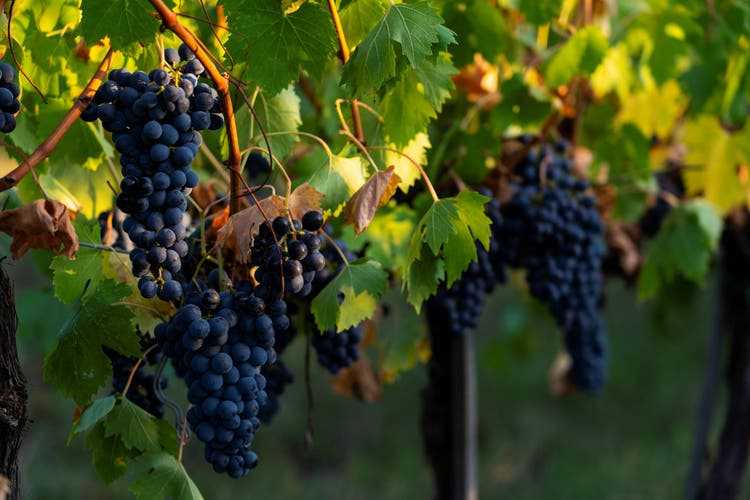
Grape vines in Umbria, photographed at sunset.
Luisa Dicuonzo is an exception among the sommeliers on the Montefalco stage. She pursues oenology as a hobby, she makes it to third place in the competition. Most of the participants in the competition are men and work with wine because of their work, for example as innkeepers. It takes a sense of smell and taste, specialist knowledge and intuition, as well as acting talent and quick-wittedness.
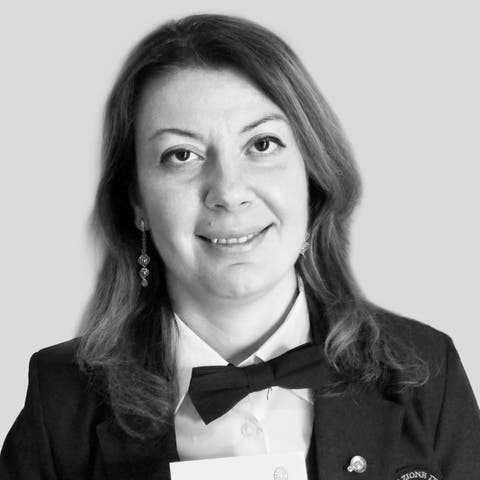
Luisa Dicuonzo is a sommelier purely for pleasure.
Reassuring: Sommeliers can be wrong too. In a competition, for example, they cannot determine the vintage of a wine with absolute certainty. This comforts the onlooker who has not found the “finish that spreads in the throat”.
Italy – largest wine producer and exporter in the world
At the top. Italy is the country with the largest wine production and also the largest wine export in the world. In 2020, 49 million hectoliters were pressed, which is the average of the last ten years. Almost half, namely 20.8 million hectoliters, was exported, which is also in line with the long-term average. Italy, France and Spain together produced 136 million hectoliters of wine last year, that is 53% of world production.
Organic is catching up. Organic wines have long led a niche existence in Italy. But for ten years production has more than doubled, from 3 million hectoliters (2010) to 7.5 million hectoliters (2018). That is a little more than a seventh of the total production.
From red wine to white wine. Italy used to produce mainly red wine, but for ten years it has produced more white than red wine. The winemakers are reacting to a changed demand that is shifting from red wine to white wine. The change in preferences is attributed to the spreading aperitif culture and rising temperatures. Cool white wines, including sparkling wines, or beer and mixed drinks aperitif are recommended.
Wine consumption increases in the pandemic year. Because of the coronavirus, wine consumption in Italy in the pandemic year 2020 increased by 7.5% compared to the previous year and by 10% compared to the average of the last five years. And this despite the fact that most of the tourists were absent. Worldwide, however, wine consumption decreased by 3% in 2020 compared to the previous year.
Declining alcohol consumption. However, wine consumption in Italy has continued for the past sixty years removed, from 17 liters per capita in 1961 to 5 liters in 2018. Overall, the Alcohol consumption halved in Italy in the last forty years, from 13 liters of pure alcohol per capita to 6.6 liters. In recent years, alcohol consumption has also increasingly shifted to beer and other beverages.
The city and its wine: Promotion for Montefalco Sagrantino DOCG.
Sources: Istat, OIV, Assobirra.
